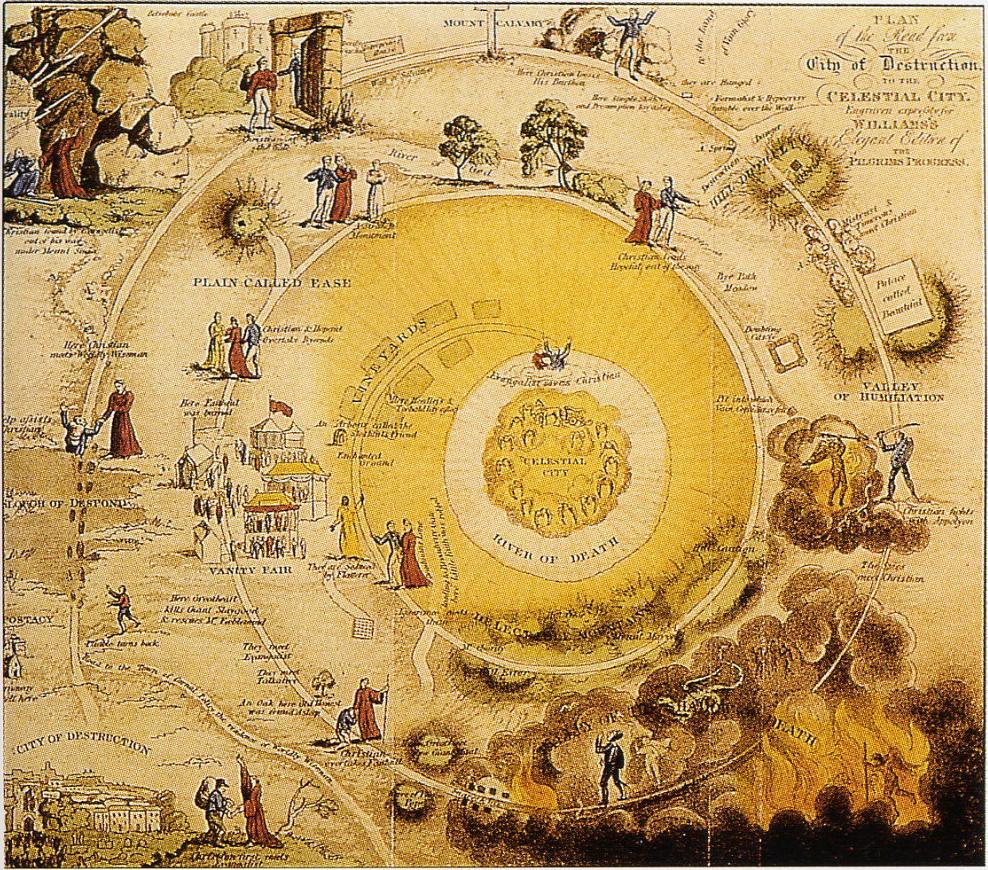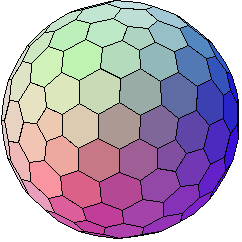Not a blackhat. Not a whitehat.
A clearhat.
A clearhat is someone who realizes there is an endless war between blackhats and whitehats that has been going on for centuries, even millennia, perhaps since the dawn of civilization itself: For every whitehat that appears on the scene, there is a blackhat out there, who is or becomes an equal. They create each other; as one develops a new skill, the other learns how to oppose or overcome that skill, and vice-versa. It's like an arms race, where each battle is won by the side that develops the best new weapon.

So a clearhat is someone who sees this, and realizes: "No matter how good I am, no matter how bad I am, no matter how skilled I am, nor how poor I am; whether I succeed or whether I fail, I'm contributing to an endless war between two opposing forces, which existed before I was born, and will exist long after I'm gone." A clearhat, then, aims at a different target than "one side or the other," and engages in a third game -- neither wholly white nor black. The color clear is a reference to staying out of that polarized game as much as possible; being invisible to it.
Consider how the color clear is not even considered a color and you'll see the crux of how it is not easy to be a clearhat. To those who play the whitehat and blackhat zero-sum game (which is pretty much everyone except children), the clearhat position is not looked upon kindly.
At first glance, it appears to be a betrayal, or at the very least, suspicious because there is an implicit "if you're not for us, you're against us" embedded in the way people see the world. In kinder terms, the clearhat point of view is often seen as incompetent, or immature. The essential point being made here is that it is inferior, in one way or another.
However, think for a moment and you will see: these adjectives are all projected labels. Reality itself is neither black nor white, but both and all between, all simultaneously. The projection happens because there is an implicit polarity embedded within our culture at all levels. There is little tolerance for people in the middle who can't make up their minds, especially when there's a war going on. So that's all they see in a clearhat -- someone who won't make up their mind, or someone who is a liability of some kind or another.
Recognizing this aspect of our culture, a clearhat should labor not to do those things which provoke such projections further. For this reason, clearhats aim to be morally and ethically ordinary; not saintly, nor demonly, because these draw attention, but ordinary. Blending in, invisible by being common.
The challenge to be ordinary is much more difficult than it seems, because in a way it is a counter-projection from the realm of self-awareness. But actions must be consistent across two completely opposing interpretations, which demands more honesty than is required from either of the two extremes. The ideas behind radical honesty are relevant here, but in a... moderate, practical, non-polarizing, manner. But then again, not too non-polarizing. This is not about passivity.
You should note, being passive-aggressive, or evasive, or somehow else seeming to be one thing while being another is only one of the challenges which the clearhat seeks to overcome. It take more energy to be two things at once; in the interest of simplicity, then, a kind of gentle asceticism develops. Thus there is a sincere appeal toward the elegance of personal integrity which is implied by the clearhat label. However, this does not mean it is a whitehat position, which can take such asceticism to a noble extreme. Clearhats see that so-called whitehats often pretend or even fool themselves or others that they have such integrity, but in truth, many whitehat actions are like virtue-signaling: a means to cover up their inner blackhat. Seeing this, the clearhat model seeks to go beyond self-delusive self-righteousness in a less polarized, less pretentious, way.
Note that this is not a standard born in a day; it takes years to achieve these goals, working slowly and steadily toward them while the vicissitudes of a normal life play through on their daily cycles. A clearhat path usually arises out of a lot of chaos which takes time to resolve.
Clearhats do not like so-called whitehats any more than they like blackhats.  Their heros are found on either side because the metric is not about external appearances, but more about inner integrity. So of course, they like both, but carefully. You see, most of the day-to-day problems clearhats encounter come from whitehats who are self-righteous and thus unable to see their own character flaws and therefore project them on to other people, with clearhats being an easy target for such projection, for the reasons explained above. Thus, clearhats aim for a lifestyle which is resilient to such tactics, and wise to the whitehat flaws -- as well as the more obvious blackhat ones, which everyone knows.
Their heros are found on either side because the metric is not about external appearances, but more about inner integrity. So of course, they like both, but carefully. You see, most of the day-to-day problems clearhats encounter come from whitehats who are self-righteous and thus unable to see their own character flaws and therefore project them on to other people, with clearhats being an easy target for such projection, for the reasons explained above. Thus, clearhats aim for a lifestyle which is resilient to such tactics, and wise to the whitehat flaws -- as well as the more obvious blackhat ones, which everyone knows.
Inwardly, a clearhat is one who invents a path forward which is somehow both and neither, together, simultaneously, choosing to do those things "against which there is no law," walking in that forbidden land between giants who throw stones at each other every day (see illustration, borrowed from the Narnia adventures). Their game is about things like structural clarity, simplicity, and elegance, not win vs. lose. Beauty, not victory, because beauty is the victory.
The logical flaw of identity has a long history
The age-old black-white struggle may seem structurally simple because it only has two elements, but upon analysis, it describes a very complex global game with many layers of redirection hiding an inherent logical weakness that, like the emperor's new clothes, no one dares admit. This hiding aspect is what makes its seeming simplicity so complicated. The logical weakness is formally known as the logical flaw of identity. Although this logical flaw is first understood as a cultural assumption (most obvious in the West), it is actually biological. It is an artifact of a left-brain way of seeing things in a way that is not properly balanced with the right brain. Its history reaches all the way back into evolution's grand struggle for survival. The continual ascendance theme of evolution is commonly understood as "survival of the fittest" but this is, like so many things, a zero-sum way of seeing things. Evolution's grand journey through the eons is also an ascendance of a certain kind of concisely elegant resilience... even beauty. Consider "survival of the most beautiful," with beauty being understood as inner beauty, not the outward show, which is more of a fitness metric. In other words, there are other ways of measuring evolution which are not zero-sum.
Instead of inventing the next great weapon, or its antidote, the clearhat is inventing ways to get by without weapons altogether. Does this mean the clearhat is a pacifist? Not necessarily; there are times when the pacifist is the traitor, and the clearhat -- sometimes accused of such things by simply being neither here nor there, is especially sensitive to this point. Strangely, the underlying logic indicates that the clearhat aims to pursue happiness, as the Declaration of Independence succinctly put it long ago. In this vein, unlike a pure pacifist, weapons may be appropriate at times -- as they were when that document was written -- but if so, they are seen as temporary, not to be carried forever, but only until certain existential threats pass. For example, the right to bear arms is not a commandment to bear arms, it's just a right that should never be infringed because history shows what a mess we get into when it is infringed. Bear arms or do not, but never mess with the right.
Note, the temporary aspect here is important -- black or white thinking likes to project things with an implied absolutivity, when reality itself has few absolutes, and carries plenty of flexibility, degrees of freedom. For example, think about how many people you know who prefer to carry weapons. Do any of them do so temporarily, or more likely, haven't they made life-long commitments to this belief system, such as seen in "you can have it when you pry it from my cold, dead hands"? Like cats with retractable claws -- there when you need 'em, otherwise not -- clearhats tend to think deeply about such things, and seek to understand when it is appropriate to make such a commitment, and when it is appropriate to let go, and seek to focus on the simple joys which are invisible to those who are always in Defense Mode. This seeming inconsistency may seem complicated to people who adhere to the absolutist version of simplicity, but in fact, it is a simpler way in practice, allowing more degrees of freedom.
Clearhat simplicity must be a liveable one, not fake or academic, idealistic, theoretical, or extreme. Those are all fragments of zero-sum pursuits, and we're talking about something more coherent, more holistic. However, this is not about going into the desert and living like a monk, in a vacuum adhering to a principle without practical challenges; this is about living in the midst of a polarized culture, blending in, being ordinary, joining the ordo ordinarium -- the order of the ordinary people -- being one with the common man, because here, in ordinariness, is where the idealistic extremes of polarized cultures are most easily let go in favor of the simple and ordinary things which comprise the daily life of the simple and ordinary.
Why not align with other "middle way" approaches?
The approach here being discussed is rooted in a decades-deep study of ternary logic[1] which continually turns up unique insights, often not found in any previous implementation. This clearhat narrative on the front page is just one way of organizing these insights. The rest of this website is another way which is more chronological but sometimes interspersed with unrelated information due to the journal style of publishing.
There are other non-duality websites out there, in fact, many. Buddhism, Zen, and other practices present robust and ancient ways to be something that is effectively a clearhat, so to speak. The resemblance is superficial. Maybe it's the "lifestyle as a method of study" approach, which means that a clearhat studies the world not only intellectually, but by living what is believed, watching carefully what happens as beliefs change over time because they're intersecting with reality not just other beliefs, then using the new information to guide further study. Maybe it's the emphasis on logic and mathematics which draws different things to the surface than you find in other approaches. There's a certain rigor there which tends to straighten out misconceptions over time.
For example, The Middle Way Society seems on the surface to be saying much the same things about non-binary as you find in the paragraphs above. It appears to be a mature perspective; the author has written multiple books and has extensive online material. Even better, the site is heartily endorsed by Iain McGilchrist, one of the world's leading experts on non-binary thought structures and how they relate to linear, binary ones.
But a closer look reveals that the author of this particular middle way is actually using a binary approach to non-binary. At the core of their solution is a denial of absolutes -- both positive and negative -- which is presented as the method for choosing "the middle way" between the two extremes. This seems quite logical. But it's logical in a way that depends on and reinforces the Law of Excluded Middle instead of seeing the true ternary included-middle beyond it.
Here's how: in order to "deny absolutes," you must establish a new absolute rooted in denial. This new absolute is in opposition to both existing poles, which are already in opposition to each other. Adding opposition to opposition cannot be a way of peace, as it is hoped. In fact, it's ironically doing the exact opposite of what it intends to be doing, adding fuel to a fire instead of adding water.
This kind of approach sounds great, and works for awhile, years, decades, even centuries... but with continually diminishing returns until all observed absolute-pairs have been successively denied, and then it begins eating itself, because there is nothing left to oppose. This is not how to find a middle way; it's how to find nihilism: "How to hate everyone and still think you're right." It looks good on the surface, but underneath it is not built on a solid foundation.
The underlying problem here is a misunderstanding about the binary nature of opposition itself. Binary opposition is nowhere found in true ternary logic. To create an absolute which denies absolutes is a logical absurdity within ternary logic, although it is perfectly reasonable within binary logic pretending to be non-binary, where it's simply a reification of the Law of Excluded Middle. Ternary logic excludes nothing, or rather, to say it more coherently: ternary logic includes everything. Even things which oppose it. It is not a sword conquering opposition, it is a sphere encompassing.
During the deep study of ternary logic mentioned above, this superficial structure (denying absolutes) represented an early stage of inquiry which eventually proved to be as just described: a binary way of approaching non-binariness. A house divided against itself, built on sand. This structure does not solve the problem of opposite absolutes, but extends it by introducing a new absolute which opposes all others and injects itself in their place. Once this paradoxical structure became evident, a hidden truth became obvious:
Whatever it is, the "new" third pole cannot be framed in opposition. It must therefore represent acceptance -- or at the very least, some form of neutrality.
Peeling back just this first layer of the onion required years of study. "Lifestyle as a method of study" takes more time but generates more integrated insights, revealing subtle weaknesses in purely theoretical pursuits. For the first time, it became evident that all previous insight into ternary logic was merely a clever reiteration of binary logic structures. There were many more layers of the onion yet to go, but even this first layer of insight has evaporated the "deny opposite absolutes" approach described by the Middle Way Society.
The clearhat approach cannot be about denial of the extremes; it is about embracing extremes simultaneously by organizing them. Instead of projecting a dual opposition -- each extreme opposed to its opposite -- true ternary logic understands "extremes" are a binary way of organizing, and reorganizes such poles in relation to a third, unifying context.
Note that "unifying" is a completely different idea than "excluding" or "denying" or "opposing" or any other similar form of division. To do this requires holding contradictory thoughts in the mind simultaneously, which is honestly really difficult for the ordinary person. F. Scott Fitzgerald put it this way: "The test of a first-rate intelligence is the ability to hold two opposed ideas in mind at the same time and still retain the ability to function." You might think that binary-minded people can do this easily, but look closely: "the ability to function" is a third thought process, and that's the key point of Fitzgerald's quote. That's the difficult part.
Because binary logic sees the extremes existing at the outer, opposite, edges of a conceptual structure, the only place it has for a third pole is "in between" these extreme outer edges. This works, but is an inadequate way of seeing the encompassing structure of ternary logic, where the unifying outside contains the two inner "extremes." This conceptual structure turns the binary idea of ternary inside out.
In binary thought, this means the impossible: the two separated "extremes" have nothing between them, not even the Law of Excluded Middle standing like Samson between the two pillars of true and false. Therefore the extremes... are contiguous? How could this be? The impossibility is resolved when you understand that logical superposition is possible: in ternary logic, we're talking about polarity as two ways of seeing the same thing, rather than as two separate things. And the two ways can happen simultaneously, within the same context. There is no either/or, just varying degrees of both.
Once you transcend binary logic, you find there are actually no true polar opposites, which are really just an illusion cast by overexercising the Law of Excluded Middle. Turns out, the LEM is not a Law, it's a Rule of Thumb which ought to be used carefully, understanding its limits.
Instead of exclusion, it turns out that within every polarity, one side or the other is more functional (for a given context) than the other in a way that can be easily seen when analyzed from a ternary perspective. In other words, for every pole that exists, there is never a single opposite but at minimum two other poles, neither of which are fully opposite. This is a fundamental plurality of polarity which cannot be understood from within a binary perspective, where it sounds redundant and absurd.

There is much to be said here, and the weblog for clearhat.org explores these and related non-binary ideas in an "out of the box" manner, circling around the notion that there exists a little-known terra incognita in plain sight, little seen because of the projective lenses of black and white which we all take for granted.
Note: not everything here is non-binary. This is ultimately a personal website, not a manifesto around which people can polarize themselves for or against. It is far too formative to play that role. Maybe we'll get to that point in the future, maybe we won't. It's not even a goal. Hence there is a fair sprinkling of perfectly ordinary musings, same as might be found on the weblog of any tech-oriented armchair philosopher. Bugs are fixed, tutorials given for obscure techy tasks, and notes-to-self are posted from time to time in a most ordinary way.
There are also a few extraordinary things here, too, probably the most notable of these being the most popular page on this site for several years, the ever-growing post on the infinite sphere the center of which is everywhere.
Being a clearhat sound like your game? Have at it, but don't be a hero. It's a game; it's fun. Taking it seriously would ruin the playful, inquisitive aspect. Note that it takes years to transition out of the extremes, and you may often feel like you're failing. But keep at it. Be ordinary. Not defensively, not offensively, but intentionally, thoughtfully, competently, and simply. Not too simple, though. Avoid defining yourself within the zero-sum games when you can. As Bruce Lee wisely put it:
"Be like water."
Or as Jesus concisely put it:
"Love your neighbor."
There is no initiation into the clearhat world, since that would make it one or the other. It's an idea you like or you don't, and if you like it, you do it, whether people notice or care or not. In the Wittgensteinien mode of being what you believe -- not talking about it -- be clear.
And of course... have fun.

Footnotes:
- ^ The link above goes to the "balanced ternary" page on Wikipedia, which is the safest place to send people who want to understand a tiny bit more about ternary logic from an external source. Why not link to the "ternary logic" page? Well, it will just confuse people. Here's why. Ternary logic is introduced at Wikipedia like this:
In logic, a three-valued logic (also trinary logic, trivalent, ternary, or trilean, sometimes abbreviated 3VL) is any of several many-valued logic systems in which there are three truth values indicating true, false, and some third value. This is contrasted with the more commonly known binary logics which provide only for true and false.
It's Wikipedia, so you know this is the most common way of understanding ternary logic. However, something which is not mentioned here nor anywhere further into the article is that this definition assumes a binary frame to talk about something which is fundamentally non-binary. The assumption is easy to detect because each of the three truth values are separate from the others. There is no discussion of their unification, blending, merging or being superposed with one another. Their distinct separation is assumed without comment even though it is an artifact of the Law of Excluded Middle. This law is required for binary logic, but a ternary implementation of ternary logic has no excluded middle.
In short, the commonly-accepted "ternary" structure is not truly ternary, it's a binary implementation of ternary.
For more than a decade, this website has journaled the development of a truly ternary logic unencumbered by such binary artifacts. Here, the prefix "true" is often added to "ternary" when talking about a three-valued form of logic with an "included middle." The included middle operates in ways which seem nonsensical to binary logic. For example, in true ternary things like true and false can blend with each other and with an underlying "oneness" which is unknown to binary logic. The middle region is known as the continuum in binary-structured thinking. Such continuum is believed to nothing to do with binary logic.
To summarize: true ternary logic is not three equal poles: "true-XOR-maybe-XOR-false" or "flip-flop-flap" or "-1,0,1" nor is it anything with three discrete poles. Instead, true ternary logic is comprised of three regions which can be described as: "true-AND-false," with the AND being the most important pole since it blends the other two. If you'd like to know more about this, take a look at this article.